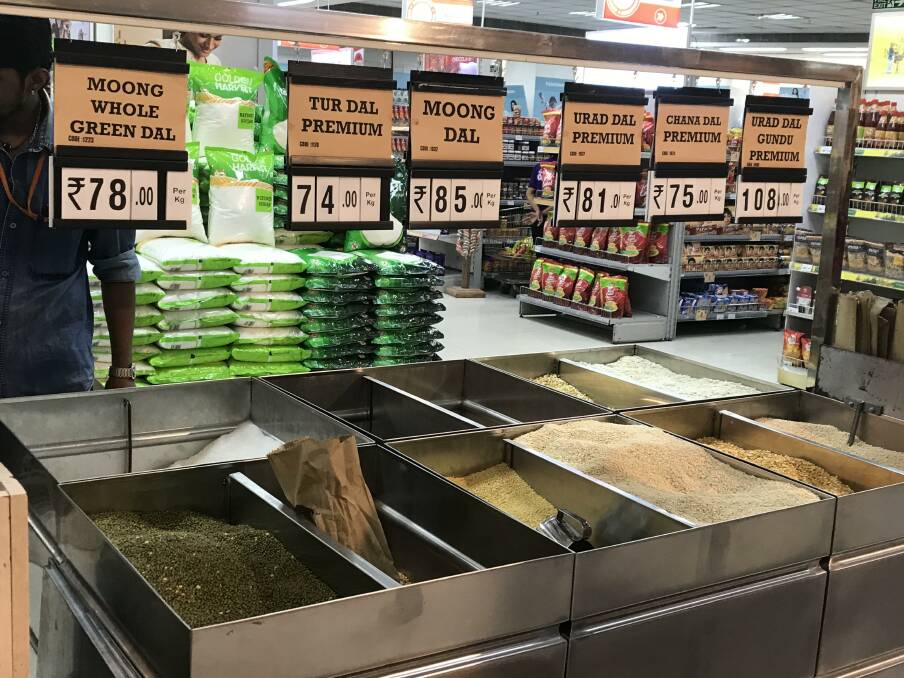
THE AUSTRALIAN pulse industry is set to enjoy a number of new opportunities in coming years as consumers across the world become increasing aware of their benefits and versatility and new technologies allow legumes to be utilised in new forms.
Subscribe now for unlimited access to all our agricultural news
across the nation
or signup to continue reading
This is the opinion of Food and Agribusiness Growth Centre managing director Mirjana Prica, who said the Australian industry was primed to move from a bulk-focused outlook to concentrating further on premium markets.
"If the bulk market represents a supermarket I see Australia being more of a delicatessen," Dr Prica said.
"Even if only 10pc of our pulse production can be diverted to high value markets that is a huge opportunity for the industry."
Dr Prica said the combination of agronomic and health benefits meant she was optimistic about big growth in Australia's pulse sector.
"You've got those amazing agronomic benefits, the fixing of nitrogen, which is so important at present with the high price of fertiliser combined with those unique dietary traits, such as the cholesterol lowering properties, the good dietary fibre and in particular the high protein levels."
She said, with edible protein becoming an increasingly valuable commodity pulses, with some species having up to 30 per cent protein, would play an important role in supplying that.
"Whether you have environmental or ethical concerns about eating meat based protein or you are looking after your own health, pulses play a big role in providing protein in plant-based diets," Dr Prica said.
She said since 2000 human protein demands had grown 40pc, primarily on the back of population growth, but also because of a rise in per capita consumption as the new middle class in places like China and India eats more protein.
"It is very exciting for the future, we know meat will dominate the protein market by value but we see plant based proteins dominating by volume."
Dr Prica said there were some good opportunities both for expansion of planted area and adding value in Australia's pulse industry.
"We do already grow a lot of different pulse crops, a lot of which are traditionally used for livestock feed."
"With a crop like lupins you can see the nutritional science come in and address some of those challenges such as the beany taste or a colour the market does not like and work to produce something that is desirable.
"We need to work closely with the consumer to use our pulses to create something the people want and grow pulses fit for purpose."
Dr Prica also said she felt Australia's tropical and sub-tropical regions were an untapped resource when it came to pulse production.
"Crops like mung beans and faba beans you can breed to be suited to our subtropics, which could really unlock the potential of these areas," she said.
"QAAFI (the Queensland Alliance for Agriculture and Food Innovation, part of the University of Queensland) is doing some great work in breeding crops suited for what is currently marginal farming land."
In terms of food production, she said there were novel solutions where food scientists were becoming more skilled in isolating desirable proteins in an economic fashion.
"We now have the ability to economically remove those beany flavours, to concentrate protein fractions."
"We have those separate protein fractions which can mimic egg white and all of a sudden you can substitute eggs for plant based protein.
"As we get more sophisticated in food science and continue to allow new products to be developed we will open up more potential markets."
"At present we might not think there is scope for something like lupin milk but people forget when soy milk first came onto the market it did not taste that great, research will help develop these type of products that the consumers want."
Dr Prica said Australia's location in the southern hemisphere gave it a critical point of difference.
"We are counter-seasonal to the bulk of the world's production, so there are some real benefits in terms of demand there."
Start the day with all the big news in agriculture! Sign up below to receive our daily Farmonline newsletter.


